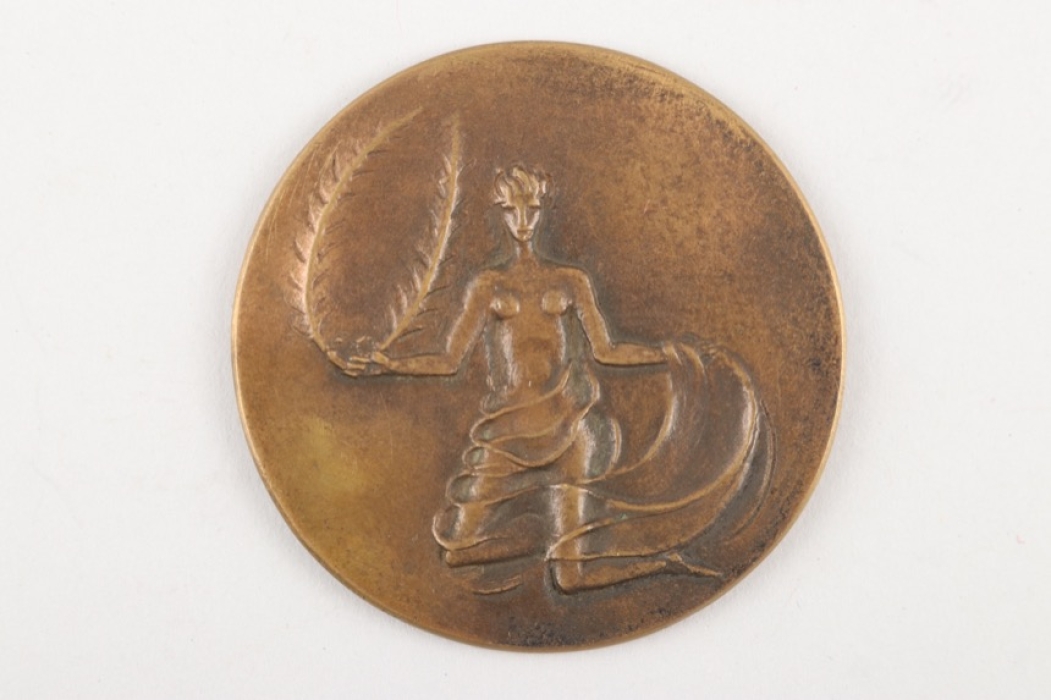Olympic Games 1936 - Participant Badge
Buy treasures for a reduced Buyer‘s Premium

Olympic Games 1936 - Dance Competition Medal
MILITARIA PRICE GUIDE
How can I see prices?
Welcome to the ratisbon's MILITARIA PRICE GUIDE!
To access all prices, pictures, and descriptions please subscribe to our MILITARIA PRICE GUIDE at www.ratisbons.com/militaria-price-guide. Save 25% when subscribing for one year! Get full access for just 75€!
We are buying single items and entire collections! Call +49 8541 9053699
-
PAYMENT
-
HOW CAN I PAY FOR MY ORDER?
AUCTIONSYou will receive an e-mail confirming your successful bids the day after the auction has ended. In your personal my ratisbon's you will be able to inform us about your most convenient payment method for this order or tell us about an alternative shipping address.
If we don’t hear from you within 24 hours, we will send an invoice choosing the payment and shipping options which we think are the most comfortable ones to you. If you decide to change your shipping or payment method after receiving your invoice, just drop us a line or visit my ratisbon's/ORDERS for any more details.
SHOP ORDERSChoose your payment method when ordering and submit your order. Once your order has been received we will send an invoice including your shipping costs and your payment instructions.
After receiving the invoice, the order must be paid within 7 days.
Please contact us to discuss layaway options.To learn more about paying at ratisbon's, please see your FAQ pages.
WE ACCEPT FOLLOWING PAYMENT METHODS
-
-
Versand
-
HOW DO YOU SHIP MY NEW TREASURES?
PACKING & TRACKINGWe usually send out orders within 1-3 working days after your payment has been received. In most cases, we are faster than this! We will inform you when your goods are being dispatched and provide a tracking number, In addition, you can always check your order status at my ratisbon's/ORDERS. Delivery times will vary depending upon the delivery destination and type of shipping service you have chosen.
SHIPPING TO ALTERNATIVE ADDRESSIf you prefer to have your order shipped to your work address or a friend during your absence, we will happy to arrange this for you. Send us an email letting us know about your new shipping address and we will be happy to send an updated invoice to you.
OUR LOGISTIC PARTNERS ARE AS FOLLOWS
-
-
OUR GUARANTEE
-
 OUR GUARANTEE!
OUR GUARANTEE!We only offer collectables which to the best of our specialists knowledge are authentic. About 15% of all consignments are returned to the consignor after extensive research due to authenticity issues.
Unlike traditional auction houses we do offer a full right of return. If you are not satisfied with what you won or bought, you may return it within 14 days. Please inform us and we will instruct you on how to return the goods. For more information, please visit FAQ pages.
Important note: Cancelling bids after an auction may disappoint the consignor, who like you is a collector. This situation is easy to avoid. We encourage you not to bid on any collectable if you are unsure if it fits into your collection. Ask us to cancel your bid 24 hours prior to the end of an auction to avoid this situation.
-
COUNTRY Germany 1918 - 1945
DIMENSIONS 60 mm
WEIGHT 54.2 g
 US LOT US1-096
US LOT US1-096EAN 3000000000281
 US LOT US1-096
US LOT US1-096PERIOD 1918 — 1945
COUNTRY Germany 1918 - 1945
COUNTRY Germany 1918 - 1945
 US LOT US1-096
US LOT US1-096Olympic Games 1936 - Participant Badge
Description
Price or commemorative medal for the Dance Competitions during the 1936 Olympic Games. Bronze cast in great conditions.
In 1936, dance was one art form that the Germans wanted to add to their Art Competitions during the Olympic Games, along with Gold and Silver Smithing, and Works of the Screen (sport film). Expanding the subcategories in each of the five art disciplines, which would have increased the number of medals as well as the number of potential participants, was the German goal for the Berlin Games. Approval by the International Olympic Committee, however, was required and none was forthcoming, not for the addition of Dance, nor for Gold and Silver Smithing or Works of the Screen. Dance, however, played a significant part both before, and during, the 1936 Olympic Games in Berlin, Germany. Nazi organizers sought to draw international attention to the achievements of their leader, Adolf Hitler, and one way to succeed was through the popular medium of dance. Noted German choreographers and dancers of the day were enlisted to play a part in the Olympic program: Rudolf von Laban, Mary Wigman, and Harald Kreutzberg. In her book, Modern Dance in Germany and the United States: Crosscurrents and Influences, Isa Partsch-Bergsohn details Laban's extensive involvement with Olympic preparations as follows: "Laban, a master at arranging mass scenes in choral dancing, was commissioned to direct the triumphal celebration of German Dance at the Dietrich Eckart Freilichtbühne (Outdoor Theater) and to organize a Great International Dance Competition in July 1936." The dance celebration to inaugurate the Dietrich Eckart stage at the Olympic grounds took place on the opening night of the Games.
From: “The Role of Dance in the 1936 Berlin Olympic Games” out of “SEVENTH INTERNATIONAL SYMPOSIUM FOR OLYMPIC RESEARCH” by ELIZABETH A. HANLEY, Pages 133 ff.
Condition
1-
Seller
History Trader Inc., 521 Thorn Street #165, Sewickly, PA 15143-0165, USA


